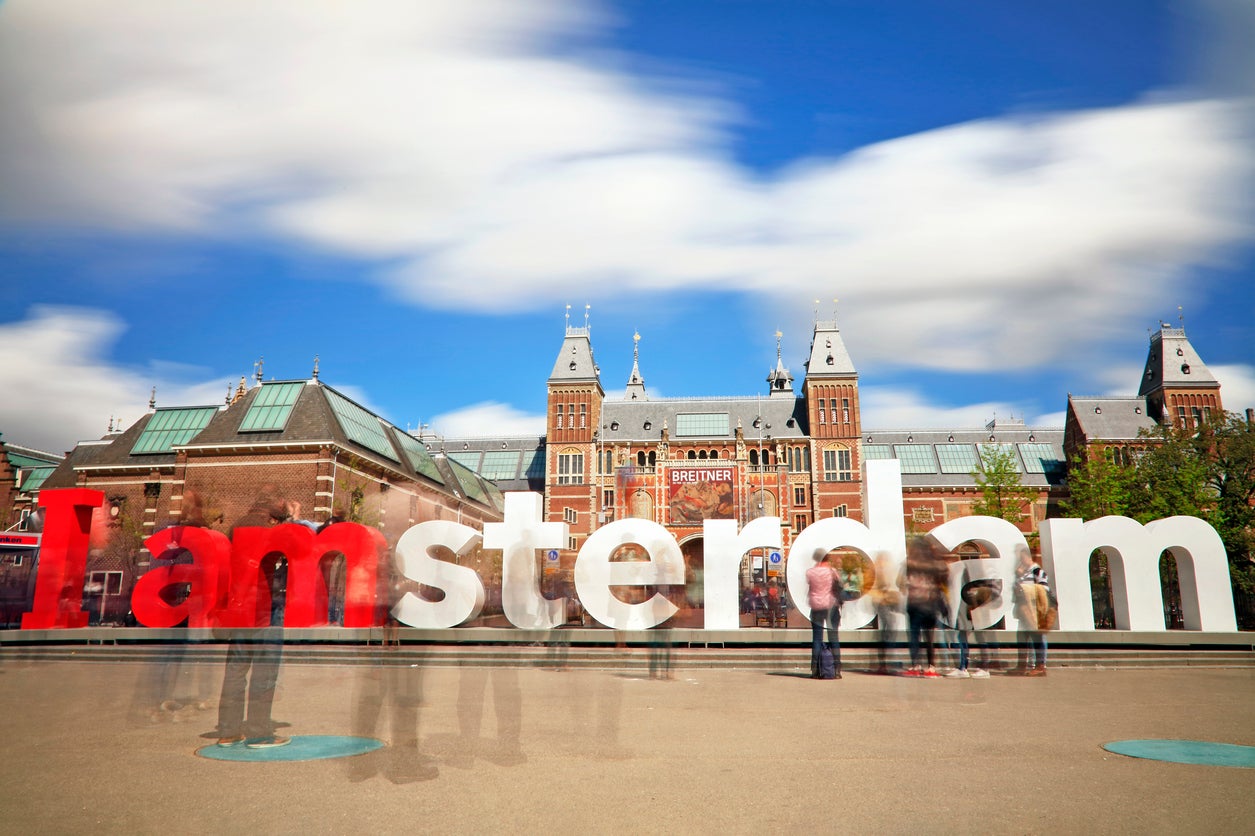Amsterdam has a new solution for overtourism
The city is thinking creatively to tackle the issue of too many tourists

Your support helps us to tell the story
From reproductive rights to climate change to Big Tech, The Independent is on the ground when the story is developing. Whether it's investigating the financials of Elon Musk's pro-Trump PAC or producing our latest documentary, 'The A Word', which shines a light on the American women fighting for reproductive rights, we know how important it is to parse out the facts from the messaging.
At such a critical moment in US history, we need reporters on the ground. Your donation allows us to keep sending journalists to speak to both sides of the story.
The Independent is trusted by Americans across the entire political spectrum. And unlike many other quality news outlets, we choose not to lock Americans out of our reporting and analysis with paywalls. We believe quality journalism should be available to everyone, paid for by those who can afford it.
Your support makes all the difference.While some places struggle to attract holidaymakers, others have to contend with the opposite problem – too many tourists.
A number of attractions and cities have taken steps or proposed measures to quell the torrent of visitors that pour through daily, such as Santorini capping the number of cruise visitors at 8,000 per day and Cinque Terre introducing a ticketing system to ensure no more than 1.5 million tourists are in the area at any one time. Barcelona mayor Ada Colau, meanwhile, has suggested introducing a new tourist tax and limiting visitor numbers.
Amsterdam, however, has taken a different approach. The increasingly popular capital of the Netherlands, which attracts over 14 million visitors each year, is getting creative rather than prohibitive with its solutions.
“We’re an open, tolerant city,” tourism chief Geerte Udo told Condé Nast Traveler. “How can you ever imagine us saying ‘You’re not welcome here!’?”
Udo and the i amsterdam team, which oversees the city’s tourism, have spent the last two years trying to subtly move tourists away from the most popular attractions, such as the Red Light District and Museum Quarter. They used the data stored on the chip inside Amsterdam’s City Card, which gives access to various attractions and free public transport, to analyse tourist behaviour and devise ways of changing it to ease congestion.
“We can see exactly how these people behave,” said Udo. “Everybody comes to the city and goes to the Van Gogh Museum in the morning, and [takes] a canal boat in the afternoon.”
The team then attempted to switch up this pattern, for example by suggesting people take a boat ride in the morning to avoid the crowds when they bought their City Card. Another scheme involved displaying a live feed showing the queue at the most popular places, such as the Van Gogh Museum, to encourage visitors to plan their trip for later in the day or plump for another destination altogether.
Other strategies have included rebranding places to entice tourists to venture further afield. Zandvoort, 18 miles from the city centre, has been renamed Amsterdam Beach to signal that it can be easily reached – and public transport to more far-flung destinations like this is also now included as part of the City Card offering.
Technology is also playing a major role in Amsterdam’s bid to redistribute tourists. A new app called "Discover the City" sends users notifications warning when an attraction is busier than normal and suggesting alternatives.
An AI-powered service for Facebook Messenger is also in the works; it will scrape a person’s profile and then come up with interesting things to see and do in the city based on their posts and likes. Currently only available in Dutch, an English version is expected to be ready by late 2018.
“You cannot close a city,” said Udo. “It’s such a short-term solution.”
She added: “You have to make solutions for the future to cope with the local world.”
Join our commenting forum
Join thought-provoking conversations, follow other Independent readers and see their replies
Comments